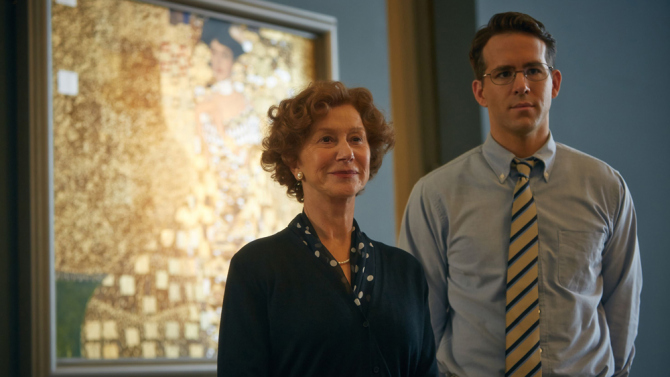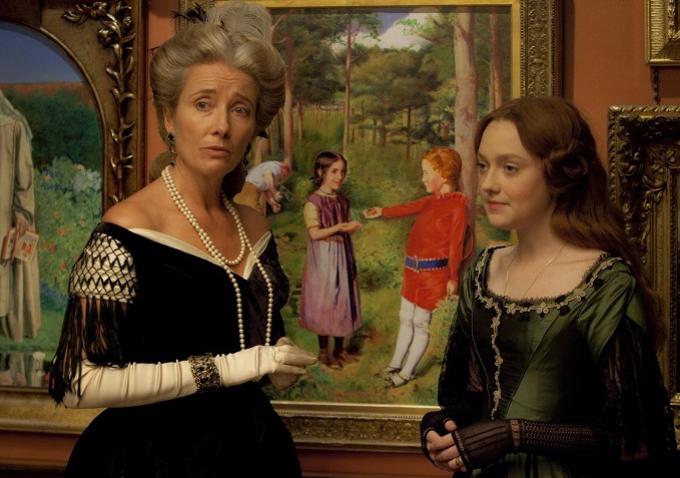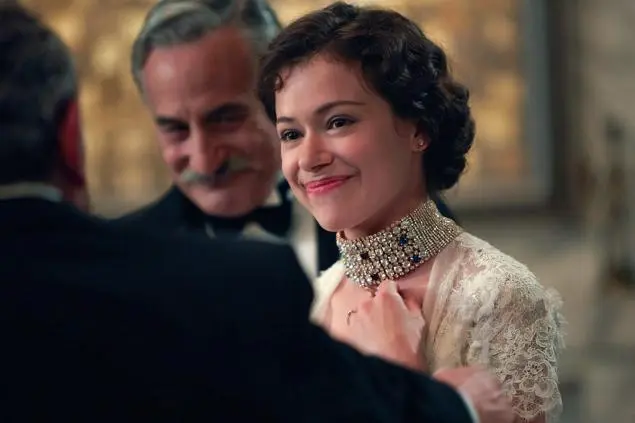Spring is an interesting time in film; after the mass of movies which are essentially dropped by the studios in January and February, and before the kick-start of summer blockbusters. Although Furious 7 is definitely a “summer” movie, we still have a month before the return of Avengers signals the real blockbusters have arrived. March and April tend to have movies with some potential to be sleepers (like The Grand Budapest Hotel); but they also often feature movies which were originally produced to be awards contenders but, after being produced, failed to make the grade. Two new movies feel very much like that; movies which would have been in promoted during awards in 2014 had they been just a little bit better.
Woman in Gold feels 2014’s attempt to recapture the success the Weinstein Company had with Philomena; the two films definitely have some similarities in terms of structure and themes, although one is about a woman’s search for the child who was stolen from her, and Woman in Gold focuses on a Holocaust survivor’s search for a painting of her aunt. They even both share the odd-couple focus of an “older lady” with a cynical young man, who takes up her cause. But the fact that this approach is so clearly parroting a previous sleeper is Woman in Gold’s big, big problem – because the story and ideology it seeks to reflect doesn’t work as a dramedy at all.
For one, the tendency to infuse often cheap humor feels like a desperate attempt to make the movie a “feel-good film,” and they almost-laughs are always placed where you want a moment to feel an actual emotion. In fact, the flashback structure often feels like it’s used to lessen the moments we see of the years before the US entered World War II, when the Nazis were coming into power. That’s unfortunate, because the flashbacks are hands-down the best and most important scenes in the film, and makes me wish the balance had been 60% flashbacks and 40% “present day.” Well, the the film takes place in the ’90s, actually, but they really try to hide that fact.

But then – then there’s Orphan Black‘s Tatiana Maslany, who somehow accomplishes the unthinkable: she out-acts Helen Mirren. I’m not saying Mirren is bad as the older version of Maslany’s Maria; but she never feels comfortable with her accent, and is far more mannered than I’m used to seeing from her. Plus, Mirren is also acting opposite Ryan Reynolds, who is not good in his movie, and his interpretation of a Jewish lawyer as someone who is charmless, nebbish, and cynical borders on being almost offensive. He is incredibly bland in Woman in Gold, and seems like he’s really forcing the big emotional moments, as if he’s shrugging off the audience watching him. I’ve like Reynolds recently – he’s really good in The Voices – but sometimes his lack of connection to his characters’ inner, emotional lives is just troubling.
Mirren and Reynolds aren’t given any help from their screenplay, which is the very definition of “edutainment.” The movie wears its morality on its sleeve, which makes things pretty boring. They barely bother trying to convince you of the legality of the painting’s return; for example, there is a moment when we’re told Maria’s aunt Adele, the subject of the painting, wanted the paintings to go to the gallery. We are told Adele’s preference is invalid by Reynolds because this written document she made before her premature death was not a legally binding will, and her husband was the actual owner of these paintings. Alright, but why exactly does this woman who died in her 40’s not have a will, and why are her wishes not deserving of consideration as well? Especially when Mirren’s desire to be reunited with the painting is due to how much she loves her aunt (although we don’t really see those moments on screen).
Ultimately I, of course, agree that these paintings should have been reunited with Mirren, but it’s a complex process, and deserves a complex answer on-screen. I would have liked to heard actually arguments and debate, rather than observe a lazy script that approaches art ownership (a pretty difficult part of the law) so flippantly. What about the wishes of the painter? Why is the person who commissioned the work the sole owner? Would Maria pursue the same thing if her aunt’s will were considered a legal document, and why is a deathbed wish not considered worthy of some consideration? And what about the gallery which showed the work as a piece of national art? Were they in the wrong, considering the painting was fraudulently given to them, and believed it had been gifted to them legally? Or should they be considered participants in this crime for being willfully ignorant? Are any of these issues addressed? Nope. In the script, she deserves the painting only because she deserves the painting, not because of some convincing legal or moral argument the film builds.
Simon Curtis directed Woman in Gold, after previously directing My Week with Marilyn and many other TV movies and miniseries. While he captures some strong visuals in the period sequences, there are many flourishes that made the final film of which I was unsure. Why did he cut a wedding dance into a frenzy? It doesn’t seem to say anything about Maria’s character, and feels out of place in this kind of film. But besides those moments, the movie is pretty dull looking, as if the cinematographer’s approach was just to shoot everything as bright as he could, oversaturating images without making a clear artistic choice. For a movie that starts out with an image of a person applying gold leaf to a painting, the fact that the painting is filmed so blandly is almost alarming. It’s as if the painting itself means nothing to the filmmakers.

Compared to Woman in Gold, the cinematic approach to Effie Gray is pretty impressive in its attempts to make every single frame look like a painting from the pre-Raphaelite era. The story focuses on the marriage of critic John Ruskin (Greg Wise) to a teenage Effie Gray (Dakota Fanning). She follows gentle Ruskin out of her father’s home in Scotland and into his estate in London, where they live with his parents (Julie Walters and David Suchet), and where he rejects her physically from the day they married to the day they separated. Ruskin wouldn’t touch Gray and acted disgusted when finally seeing her body naked, which drove Gray to depression, hysteria, and finally a love affair with painter Everett Millais (Tom Sturridge).
It’s a fascinating story, and one which fits screenwriter Emma Thompson’s interest in a feminist reframing of history. Thompson also costars as Gray’s one confidante, Lady Eastlake, and is a delight to see as she speaks feminist commentary about not asking women to hold their tongues in the company of men and to make their needs in marriage clear from the beginning. The fact that we only get three scenes between Gray and Eastlake is almost tragic, especially because Walters is entertaining as her more demanding mother-in-law, and the conversations offer a nice dichotomy.
But the movie is slow – really slow – and doesn’t kick into gear until the last third, when Gray pursues a divorce on the grounds that Ruskin could not consummate the marriage. The legal rights of women were fascinating in the Victorian era, considering women were considered the property of their husbands and could have their reputations easily ruined as a kind of tactical move against them. But those scenes are rushed, and we never see the case in court; we only hear about it in conversation and prologue text.
The film also feels a bit unfair to Ruskin, who clearly had issues which we never learn about, and is presented as having deficiency of character rather than mental or physical issues. They speak of him as immoral, but we know that, just as Gray had so few rights as a woman in the nineteenth century, mental health was equally misunderstood. The only reason they suggest for Ruskin’s behavior is that he had pedophile tendencies; but they never say this outright, and he could just as possibly been gay or asexual in a time when such things would have equaled insanity. To his credit, Greg Wise is pretty great at trying to pepper his character which a bit more nuance than the screenplay (by his real-life wife) affords him.

Thompson is singularly interested in the plight of Gray, which is thus the film’s strength and weakness. Focusing on women without rights in society and forced into unlivable situations makes Gray an incredibly sympathetic character, and the steps she takes to fix her situation are heroic. But when you show her husband as one-dimensional in a movie about a marriage (not to mention Sturridge’s Millais, who is just good) you can feel something is missing.
It’s unfortunate that the two movies offered as counter-programming this week don’t offer more, although if you’re familiar with the stories they are trying to dramatize, and know all the pieces they choose to leave out, they might be interesting to see on screen. After all, films based on true stories can rarely cover the whole story. I just wish the Woman in Gold and Effie Gray didn’t leave things out as a willful attempt to prove their point without providing convincing evidence or arguments.
Lesley Coffin is a New York transplant from the midwest. She is the New York-based writer/podcast editor for Filmoria and film contributor at The Interrobang. When not doing that, she’s writing books on classic Hollywood, including Lew Ayres: Hollywood’s Conscientious Objector and her new book Hitchcock’s Stars: Alfred Hitchcock and the Hollywood Studio System.
Are you following The Mary Sue on Twitter, Facebook, Tumblr, Pinterest, & Google +?








